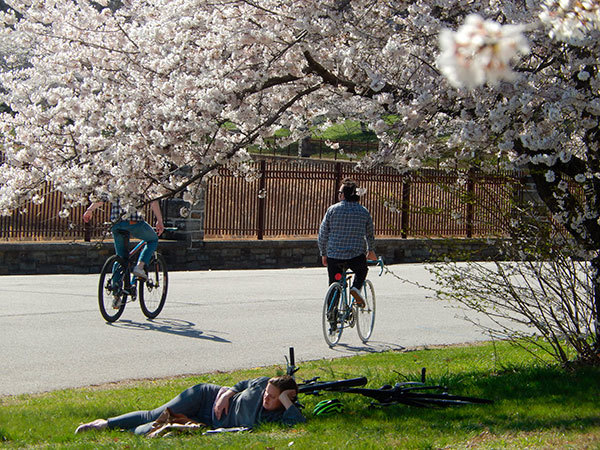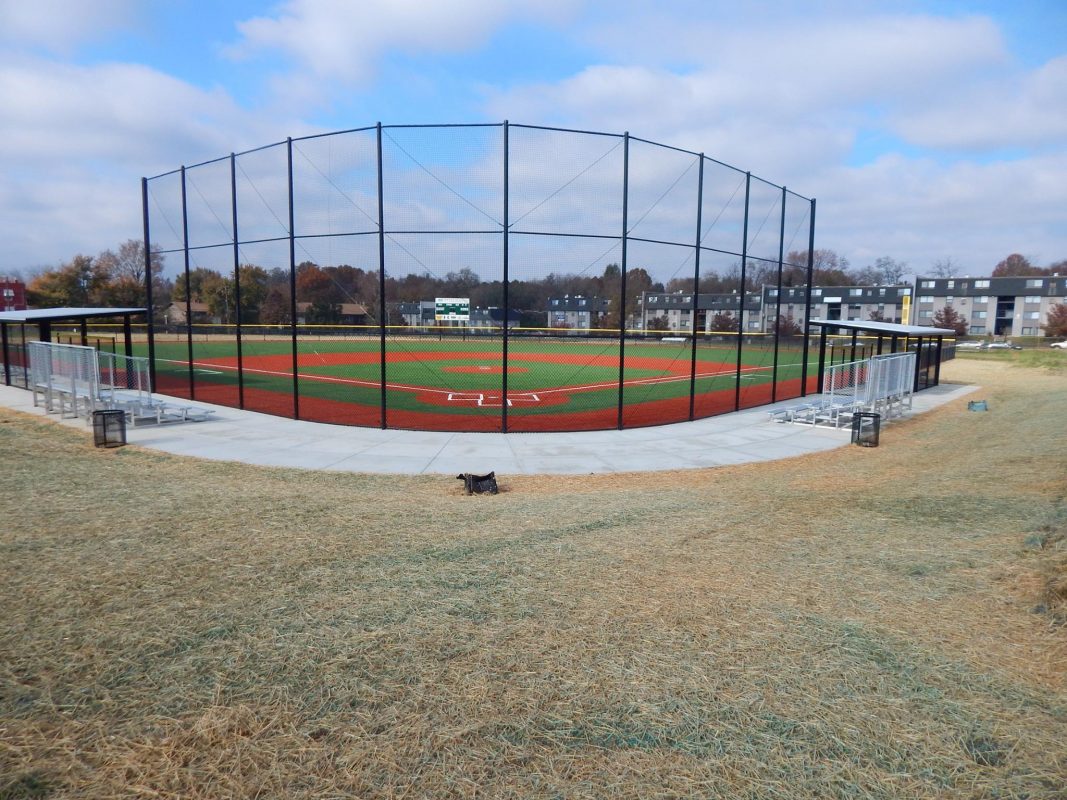
BeLeaf
In our city’s ever-evolving effort to become a “cleaner, greener” version of itself, the Flowering Tree Trails of Baltimore initiative is the beautiful, fragrant next step. The effort—organized by a coalition of city governmental departments, environmental groups, and volunteers—aims to plant 6,000 flowering ornamental trees along 39 miles of Baltimore trails. In the spring, when they flower, the trails will be visually connected and become a source of splendor for residents and tourists alike.
“In time, our city could be as famous for its Flowering Tree Trails as Washington, D.C., is for its cherry blossoms and New York is for the High Line,” says the initiative’s website. The plantings, which can range from—crabapples and cherry trees to dogwoods and silverbells—will contribute to the city’s goal of increasing its tree canopy from 28 percent to 40 percent by 2037. That is the level of coverage the U.S. Forest Service recommends if Baltimore wants to improve its air quality. The first trees went into the ground on November 11, during a ceremony in Druid Hill Park. Organizers estimate that, when all is said and planted, the initiative will cost somewhere in the low seven figures. Fundraising efforts are underway.
Bay Watch
Maryland Senator Chris Van Hollen has introduced legislation to increase funding for a program that helps farmers prevent agricultural runoff from entering the bay. According to the Chesapeake Bay Program “agriculture is the single largest source of nutrient and sediment pollution entering the Chesapeake Bay.” The bill, officially titled the Chesapeake Bay Farm Bill Enhancements Act of 2017, would triple funding—from $100 million to $300 million—available to farmers for mitigating practices such as constructing secure manure storage, installing cover crops, practicing no-till farming, and maintaining forested stream buffers.
Van Hollen’s bill has already garnered multiple sponsors, including one Republican, Sen. Shelley Moore Capito of West Virginia. According to The Washington Post, Congressman Robert C. “Bobby” Scott of Virginia’s 3rd District will introduce an identical bill in the House, but is still gathering support. Separately, Congress continues to debate 2018 funding levels for the Chesapeake Bay cleanup program—a six-state, $73 million agreement to curb pollution that President Trump has proposed eliminating.
Sewer Followup
When last we checked in with Baltimore City’s $1.6 billion plan to upgrade its failing sewer system, the city was locked in a dispute with water quality advocacy group Blue Water Baltimore over the scope of the federally mandated consent decree. Blue Water Baltimore wanted the work to continue until water quality met a certain benchmark, even if that meant performing repairs and upgrades outside the purview of the initial agreement. The city—and the federal government—argued that this was not feasible or necessary. In October, a federal judge sided with the city and federal government. The first phase of the project, which will address 83% of sewer overflows, is supposed to be completed by January 1, 2021. All remaining work is to be completed by 2030. The consent decree can be viewed in full here.

Park Places
- The ribbon cutting of a redeveloped baseball field in West Baltimore provided the setting for a classic Orioles reunion last week as Cal Ripken Jr., Eddie Murray, and Brooks Robinson gathered at the newly dedicated Eddie Murray Field at BGE Park. The park, a project of the Cal Ripken Sr. Foundation, now features a synthetic turf baseball diamond, dugouts, a backstop, and a digital scoreboard. The field is located behind James Mosher Elementary School and will host after- school programming in addition to James Mosher Baseball—the oldest continuously operating African-American youth baseball league in the country.
- Users of the Stony Run trail that snakes through many of North Baltimore’s most coveted neighborhoods had cause for celebration in early October. After nearly 10 years and $1 million in investment, two footbridges opened creating the final linkages in the trail that runs between Roland Avenue and North Charles Street from just below Northern Parkway to Remington.
- In October, the state announced it will allocate $23 million to protect parcels of farmland, forest, and open space in 17 conservation districts around the state. The funds are part of the Rural Legacy Program, a program of the state Department of Natural Resources, that works “to preserve large, contiguous tracts of land and to enhance natural resource, agricultural, forestry and environmental protection while supporting a sustainable land base for natural resource based industries.” This year’s recipients include the Manor and Piney Run areas in Baltimore County, and the Deer Creek area of Harford County.
Babies in a Half Shell: Turtle Power!
In late September, the National Park Service announced that a nest of loggerhead sea turtles successfully hatched on Assateague Island National Seashore. The approximately 100 hatchlings emerged from one nest site in the Maryland Over Sand Vehicle zone and successfully made their way out to sea. This is the first successful hatch of loggerhead sea turtles on Assateague, though other attempts have been noted in recent years. The species generally does not nest north of North Carolina. Bill Hulslander, chief of resource management for the National Seashore says, the hatch “underscores the increasing importance of undeveloped beaches along Assateague Island to sea turtles and other federally threatened and endangered species.”
